Raising Cane’s celebrates National Chicken Finger Day at FOX Square
Christopher Mariani, area leader for Raising Cane’s, brings its famous tenders and secret sauce to FOX Square to mark National Chicken Finger Day.
As millions of people all over the world focus on the Olympics right now, poultry remains perched on a pedestal high above Paris all year long.
Le Coq & Fils – The Rooster & Sons – is a bright, sleek modern restaurant with a magnetic midnight blue façade in Paris' picturesque hilltop artists' village of Montmartre.
"Just like a rooster would have climbed to the top of a pile of hay in a farmyard," the eatery says in a release of its location.
NEW YORK WOMAN HONORED WITH SPECIAL DESSERT AT POPULAR RESTAURANT FOR HER 70 YEARS OF LOYALTY
Whole-roasted chicken and other fowl fly off the menu at Le Coq & Fils, known in English as The Poultry House.
Its rare-breed birds strut across the Paris dining scene like the cock of the walk, treated with the regal splendor of fine French bubbly from Champagne, just east of Paris.
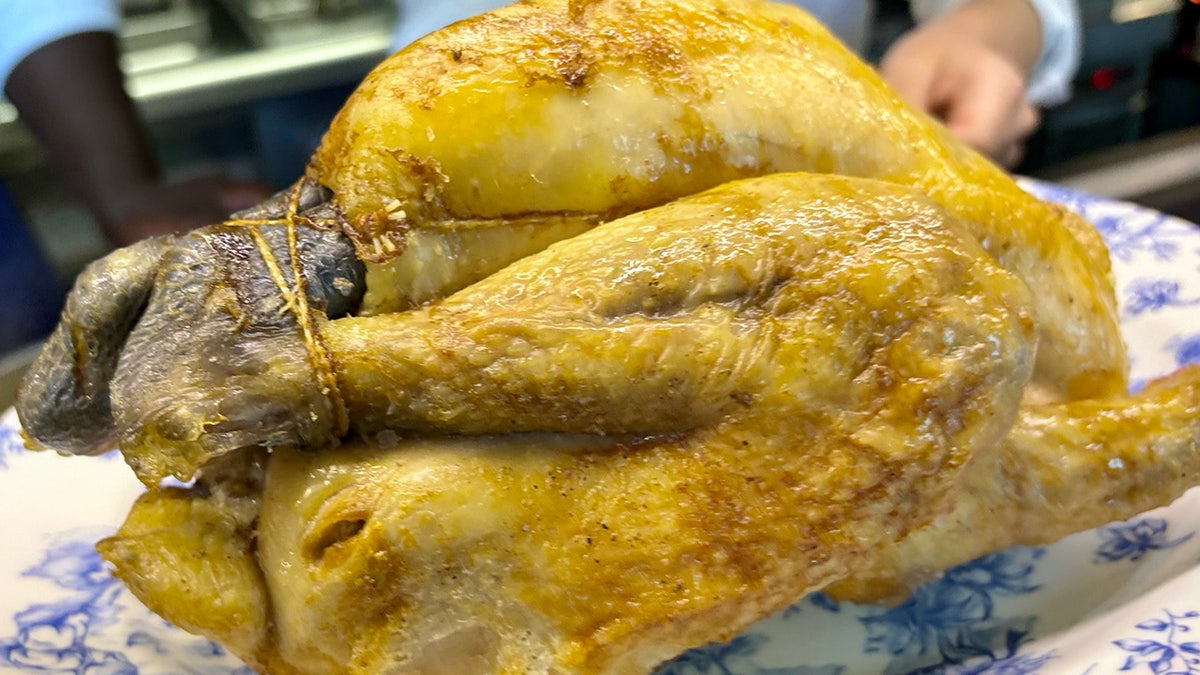
Roasted heritage-breed white Gauloise chicken from Bresse, France, served at Le Coq & Fils (Rooster & Sons) in Paris, France, July 2024. The region of Bresse, near Switzerland, has been recognized for centuries for its uniquely flavored local chickens. (Kerry J. Byrne/Fox News Digital)
"Chef wants to be the steakhouse of poultry because he loves poultry and, for him, it is the most elegant meat that exists," Patricia Grunler-Westermann said in a phone interview, speaking in English on behalf of her husband, celebrated restaurateur Antoine Westermann.
Le Coq & Fils specializes in whole roasted, heritage-breed birds, raised by small farmers around France.
Chef Antoine Westermann "loves poultry and, for him, it is the most elegant meat that exists."
The royal-treatment roosters come with a princely price tag.
The most expensive option on the menu during a recent visit by Fox News Digital costs €167 – about $181 for the juicy bird on the bone in U.S. legal tender.
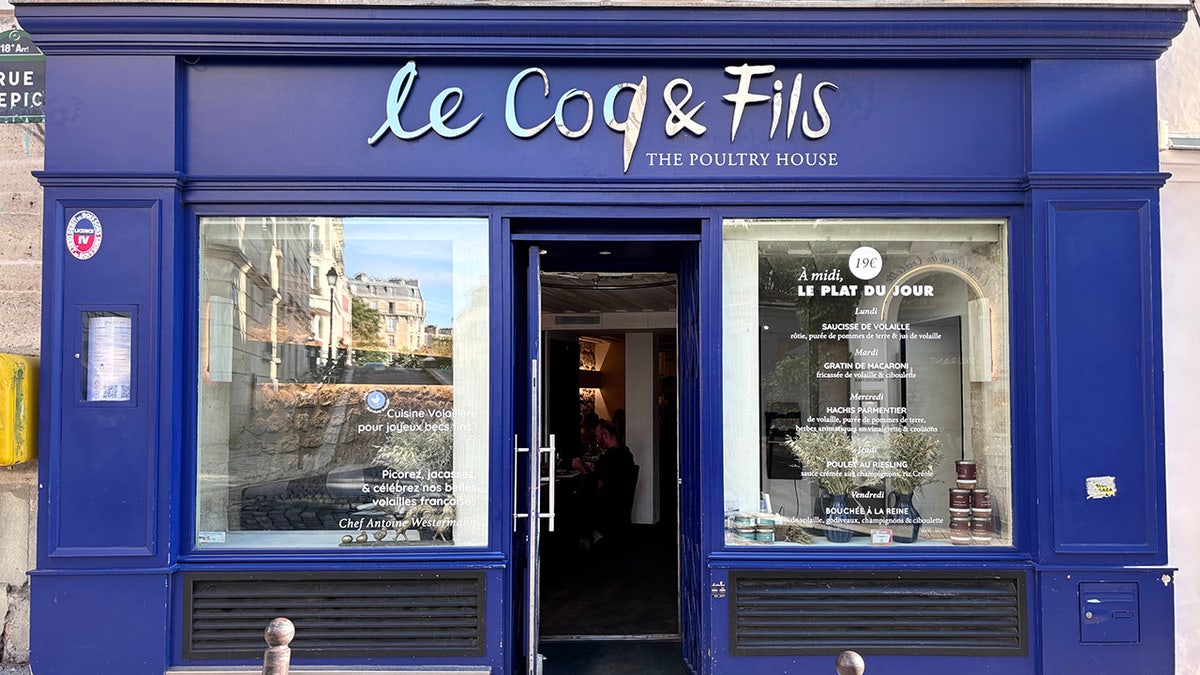
Le Coq & Fils (Rooster & Sons) in Paris, July 2024, also known as The Poultry House, specializes in small farm-raised, heritage-breed chickens and other poultry birds. Its recent menu included a whole bird for four people for €167 ($181). (Kerry J. Byrne/Fox News Digital)
They are suggested to feed four people. But two hungry adults could kill the bird with one sitting.
Listed on the menu under "birds to share," the whole-roasted chickens come with an array of sides to choose from and are sourced from France's most prestigious poultry producers.
CHICKEN THIGHS VS. CHICKEN BREAST: WHICH ARE 'BETTER' FOR YOU? FOOD EXPERTS WEIGH IN
Westermann rose to international prestige with the Michelin three-star restaurant Le Buerehiesel in Strasbourg, France.
The Westermanns ran the New York City restaurant Le Coq Rico, also fowl-focused, from 2016 to 2018.

Chef Antoine Westermann of Le Coq & Fils, in Paris is celebrated for fine dining heritage-breed poultry. Westermann rose to international prestige with the former Michelin three-star restaurant Le Buerehiesel in Strasbourg. (@cookheure/Le Coq & Fils)
The restaurant provides tasting notes about the birds and the farms that raised them, while the maître d' presents the pullet at your table for approval, like a sommelier would offer a bottle of fine wine.
It's much more than just a hum-wing-and-drum chicken dinner. It's an elevated dining experience normally reserved only for beefy steakhouses and stylish wine bars.
MEET THE AMERICAN WHO INVENTED BUFFALO WINGS, DISRUPTED ENTIRE CHICKEN INDUSTRY
The $181 white Gauloise bird was raised in Bresse, an area of central-east France not far from the Switzerland border. Bresse's fame for fabulous fowl dates back centuries.
"The queen of poultry, the poultry of kings," Gallic gourmand Jean Anthelem Brillat-Savarin proclaimed of Bresse birds in his landmark 1825 food treatise, "The Physiology of Taste."
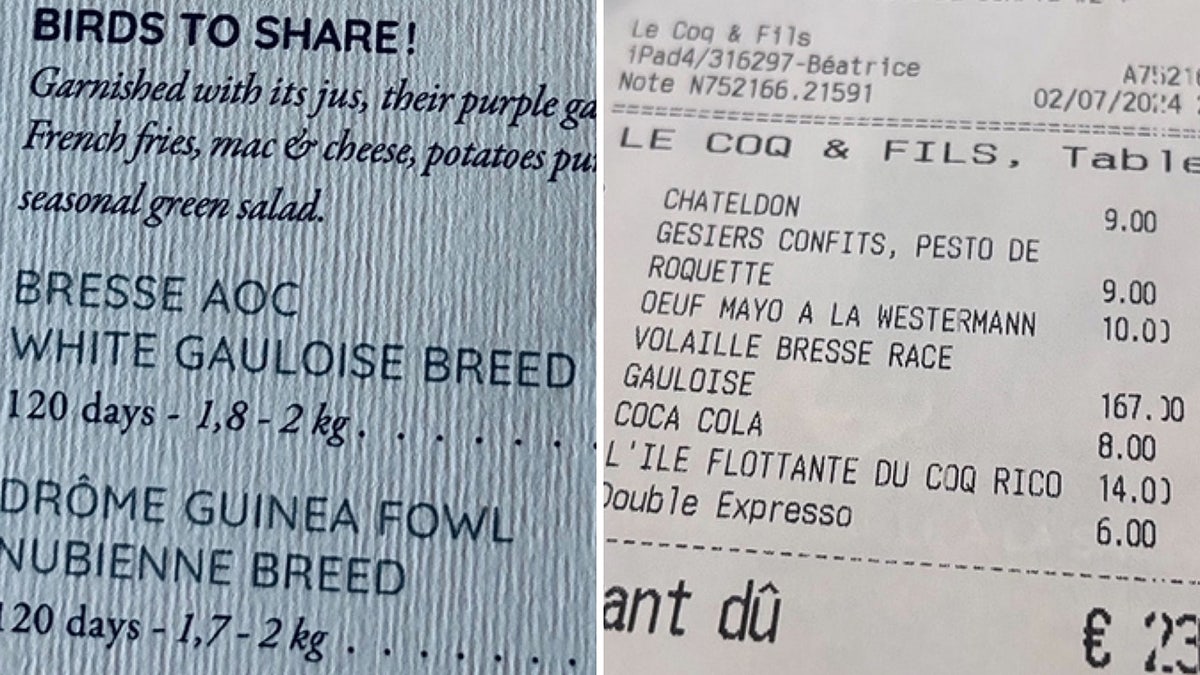
Le Coq & Fils in Paris elevates chicken with heritage-breed birds slow-raised and slow-roasted by celebrated chef Antoine Westermann. (Kerry J. Byrne/Fox News Digital)
Bresse birds enjoy the "appellation d'origine controlle" (AOC) designation, which protects historical regional products with brand names in the marketplace.
Only birds raised in Bresse can claim to be Bresse birds, much like only bubbly made in Champagne can call itself champagne.
"Son gout est elegant, sa chair tendre, sa peau, croustillense et gouteuse a la fois," reads the restaurant's tasting notes for the chicken celebre.
'NEXT-LEVEL' CHICKEN SALAD FOR THE PERFECT BBQ SIDE DISH: TRY THE RECIPE
In English: "Its taste is elegant, its meat tender, its skin crispy and delicious at the same time."
The bird is served around its backbone but deconstructed into legs, wings, thighs and breasts, plated with its thick, crispy, ruddy brown, decadently savory skin and plump cloves of purple garlic.

Roast chicken with bulbs of garlic at Le Coq & Fils (Rooster & Sons) in Paris, France, July 2024. The restaurant specializes in heritage-breed chickens from small local farms, including those in Bresse, a region of eastern France historically recognized for its flavorful local chickens. (Kerry J. Byrne/Fox News Digital)
A small metal tag touts it as a legitimate Bresse-raised bird.
Even the untrained eye can see the difference between heritage-breed birds and commercially raised chickens.
Notably, the breasts of the Bresse bird are small relative to the rest of the body, compared with plump-breasted mass-produced birds found in the supermarket.
CLICK HERE TO SIGN UP FOR OUR LIFESTYLE NEWSLETTER
Commercial-grade chickens have been bred and fed to plump up their coveted white-meat breasts.
The $181 price tag, Grunler-Westermann said, is a function of many factors.
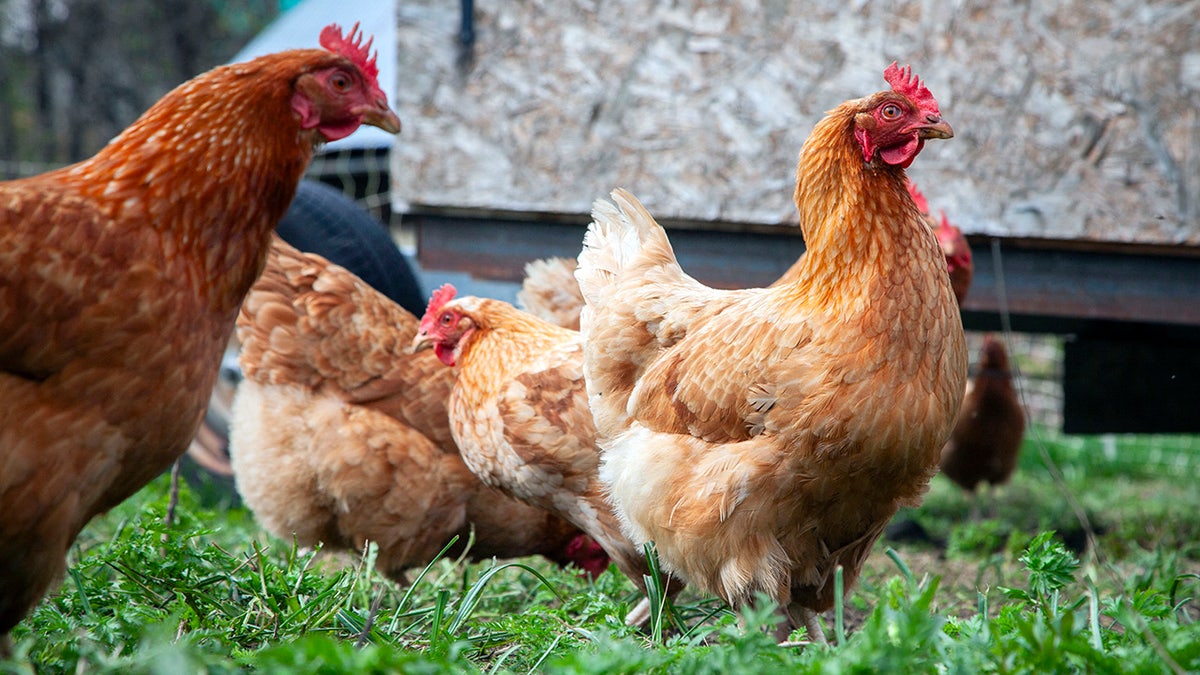
Free-range chickens are seen on a small family farm in Nevanche, France, May 16, 2024. (THIBAUT DURAND/Hans Lucas/AFP via Getty Images)
Heritage-breed birds are raised for up to 160 days, compared with 30 days for commercial birds that are fed and fattened for efficiency, not flavor.
The chickens – quail and squab are on the menu, too – come from the most exclusive farms in France. They are slow-cooked at the restaurant with a technique Westermann has developed for decades.
CLICK HERE TO GET THE FOX NEWS APP
"It's about slow growing and slow cooking and about focusing on one meat," Grunler-Westermann said.
"It's a meat festival."
"There are a lot of restaurants where you can find, for instance, only fish, or you have steakhouses where you know that they specialize in steak. We focus on chicken."
The chickens on their menu cost much more to raise and to feed, take much longer to mature and are grown by farmers they vet for the quality of their agricultural practices.
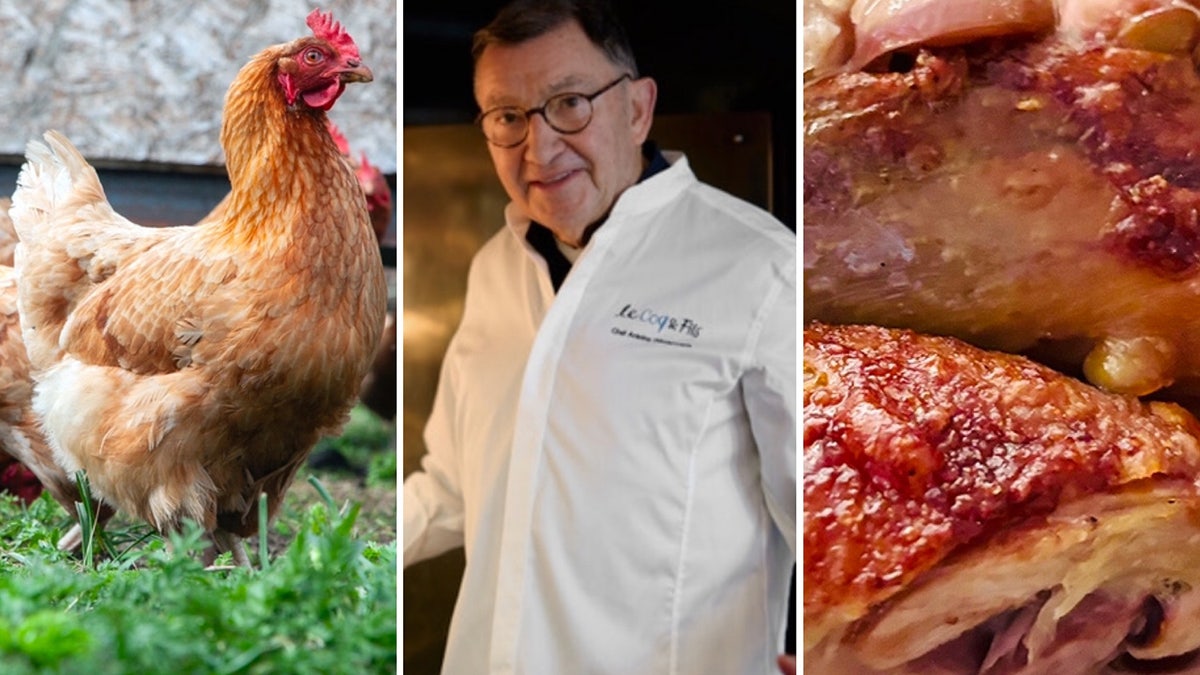
French chef Antoine Westermann elevates chicken at Le Coq & Fils in Paris. It features heritage-breed chickens from small farmers. (Getty Images; @cookheure/Le Coq & Fils; Kerry J. Byrne/Fox News Digital)
The Westermanns hope to elevate the public's perception of chicken with their poultry pageant in Paris.
"Nobody thinks twice when they order a steak at a steakhouse. They know that it's expensive, but they know that the meat is exceptional and that they'll enjoy a real experience," Grunler-Westermann said.
For more Lifestyle articles, visit foxnews.com/lifestyle
"When you eat the whole bird, there are really so many different flavors – the dark meat, the white meat, the taste and texture of the skin and all the delicious meat between the bones," he also said.
"It's a meat festival."

